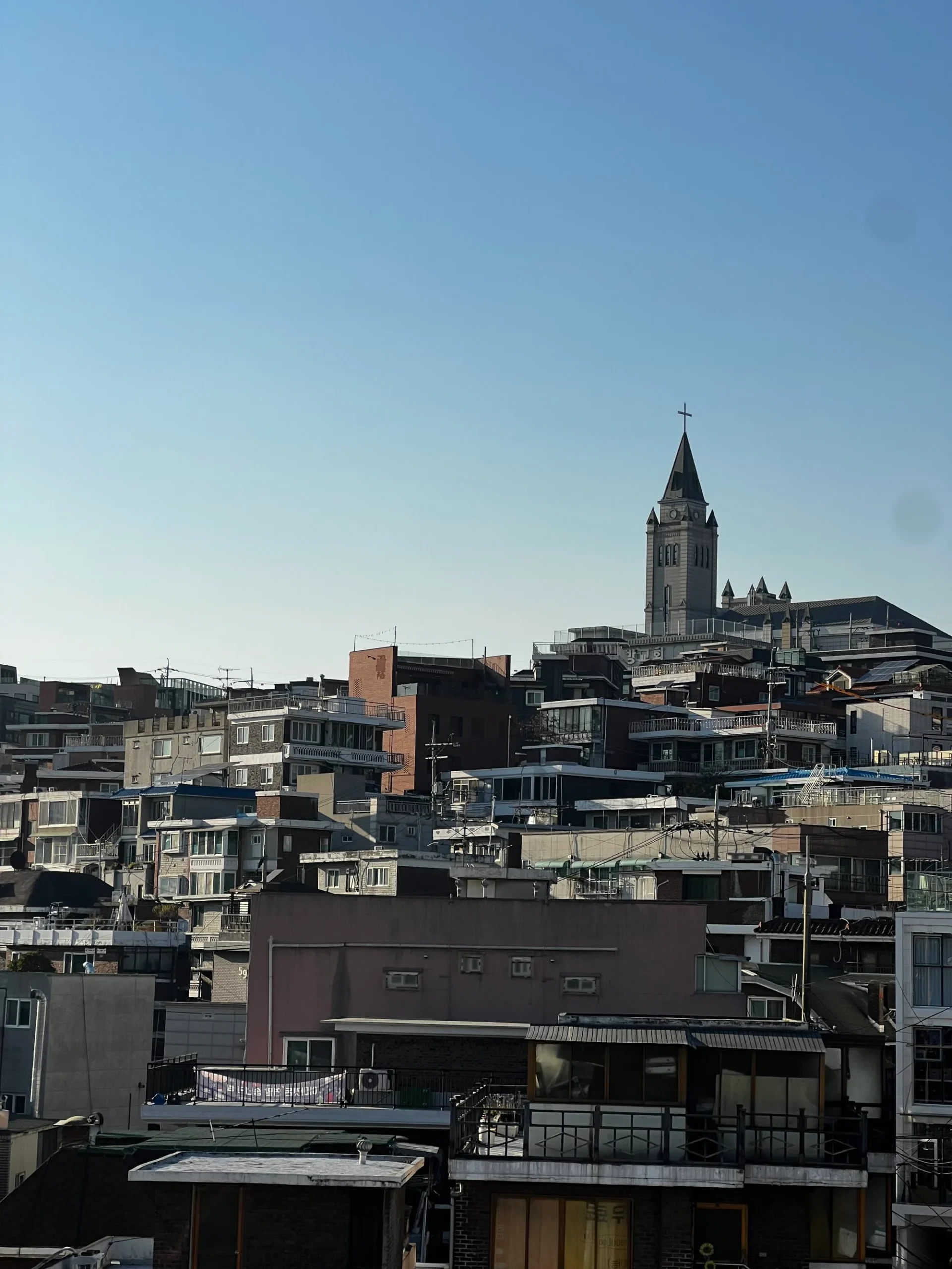Haebangchon, nestled at the base of Namsan mountain in Seoul, South Korea, stands as a testament to the resilience and transformation of a community. Originally a refuge for North Korean migrants during the Japanese colonization and post-Korean War era, Haebangchon, meaning “Liberation Village,” has transitioned from a makeshift settlement into a bustling, multicultural district. The narrow, steep streets and modest houses, characteristic of the area, hold stories of struggle and survival from the 1950s, while today, they host a blend of residential and commercial vibrancy.
This district, once dominated by squatter settlements, witnessed the economic upliftment of its residents in the 1960s, with many turning to the knitting industry for livelihood. The 1970s and 1990s saw significant redevelopment, replacing shanties with modern structures. The close proximity to the US military base in Itaewon brought in American influences, adding to the area’s multicultural fabric.
Today, Haebangchon is a melting pot of cultures and cuisines, with a main street bustling with Western-style restaurants catering to the expansive expat community. Despite its urban evolution, Haebangchon retains its historical essence, evident in the “moon villages” perched on its slopes, offering panoramic views of Seoul. These neighborhoods, traditionally inhabited by the less affluent, provide a glimpse into everyday Korean life, with scenes of laundry drying on balconies and fruit trees in small gardens.
The upper sections of Haebangchon are a haven for creativity and nostalgia, housing independent bookstores, vintage lifestyle stores, and unique cafes like Namsan Arae, known for its traditional Korean tea and stunning city views. However, the lack of comprehensive public transport and reliance on the “Yongsan 02” minibus highlight ongoing challenges in accessibility for residents, many of whom are elderly and depend on canes to navigate the steep terrain.
Haebangchon’s historical significance is further accentuated by remnants like the 108 staircase, built during the Japanese colonial period to access a local version of the controversial Yasukuni Shrine. Though the shrine was dismantled post-liberation, the staircase stands as a historical marker, alongside the first elevator installed in 2018 to aid residents.
At the heart of Haebangchon is a church built in 1947 by North Korean Christians, a symbol of the community’s faith and resilience. The bustling intersection at the top of Haebangchon, sans traffic lights, mirrors the neighborhood’s harmonious coexistence of old and new.
The Shinheung Market, once a local hub for groceries, has transformed into a trendy spot with cafes, restaurants, and jazz bars. Traditional Korean earthenware shop Onggi, a 56-year-old establishment, and decades-old restaurants like Tong Dak Si Dae and Go Chang Jip, serving authentic Korean cuisine, attest to the area’s rich cultural tapestry.
Haebangchon stands as a vibrant embodiment of Seoul’s dynamic history, where the past and present coalesce, offering a unique urban experience that intertwines cultural heritage with modern lifestyle.
READ MORE:
